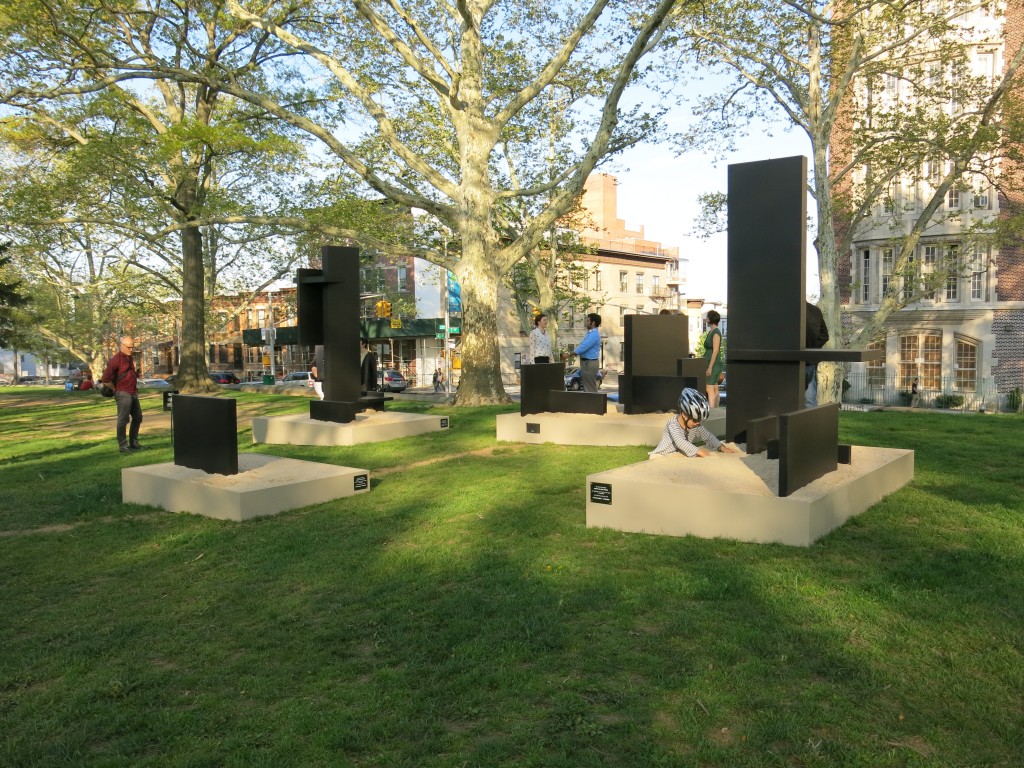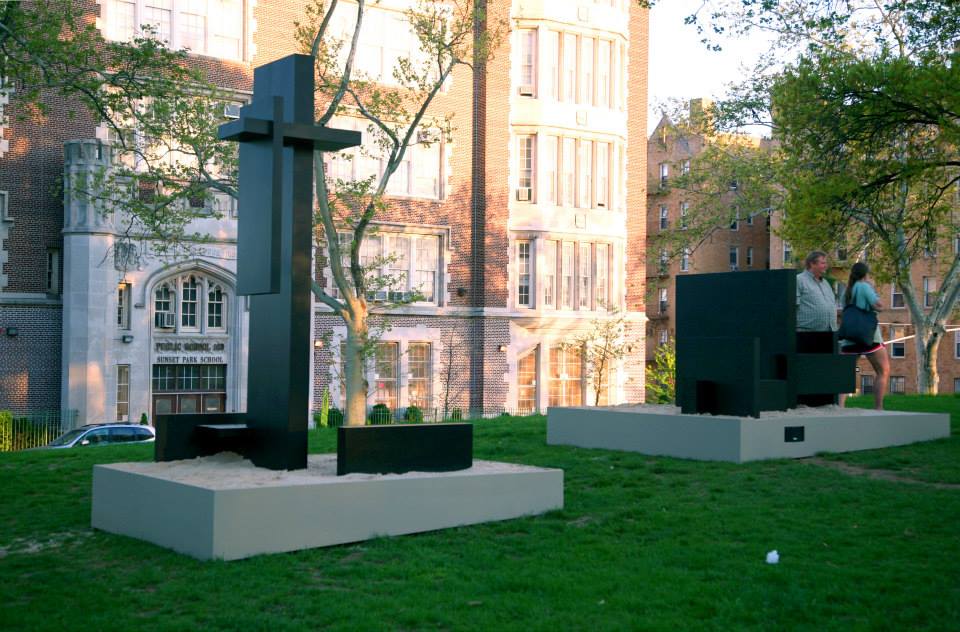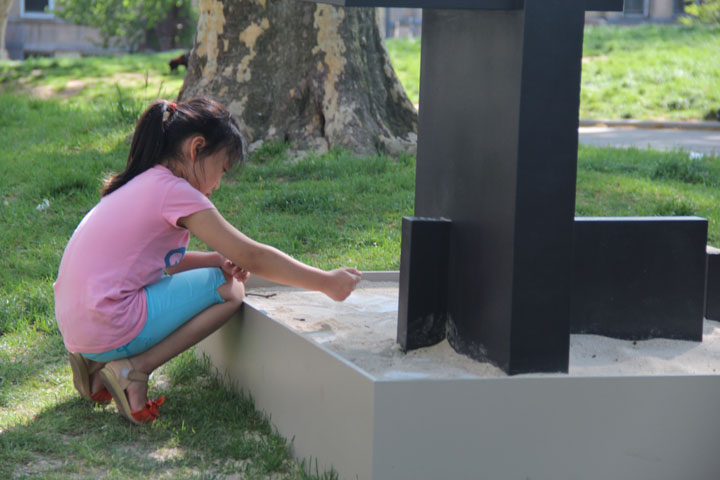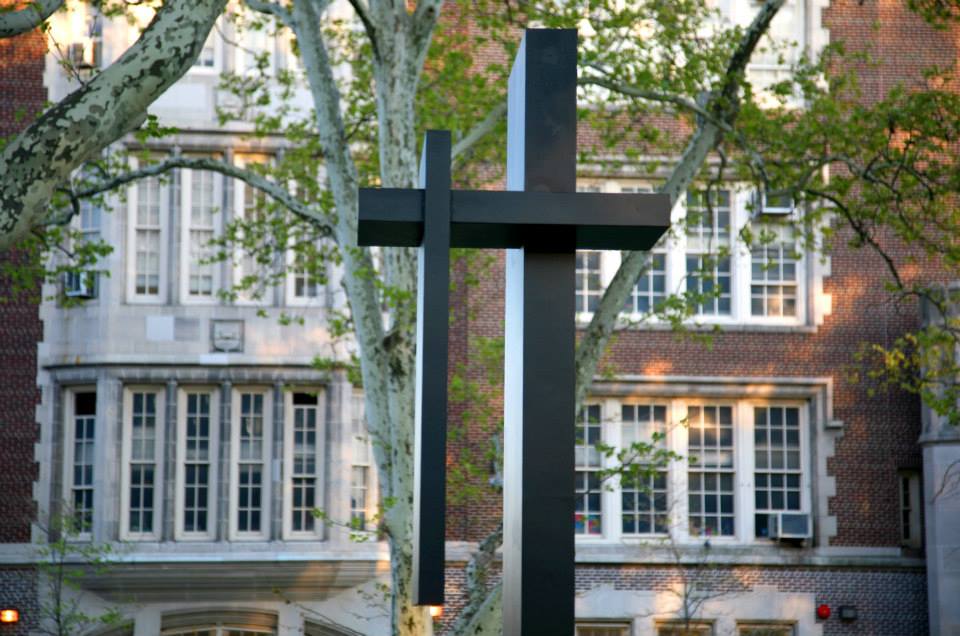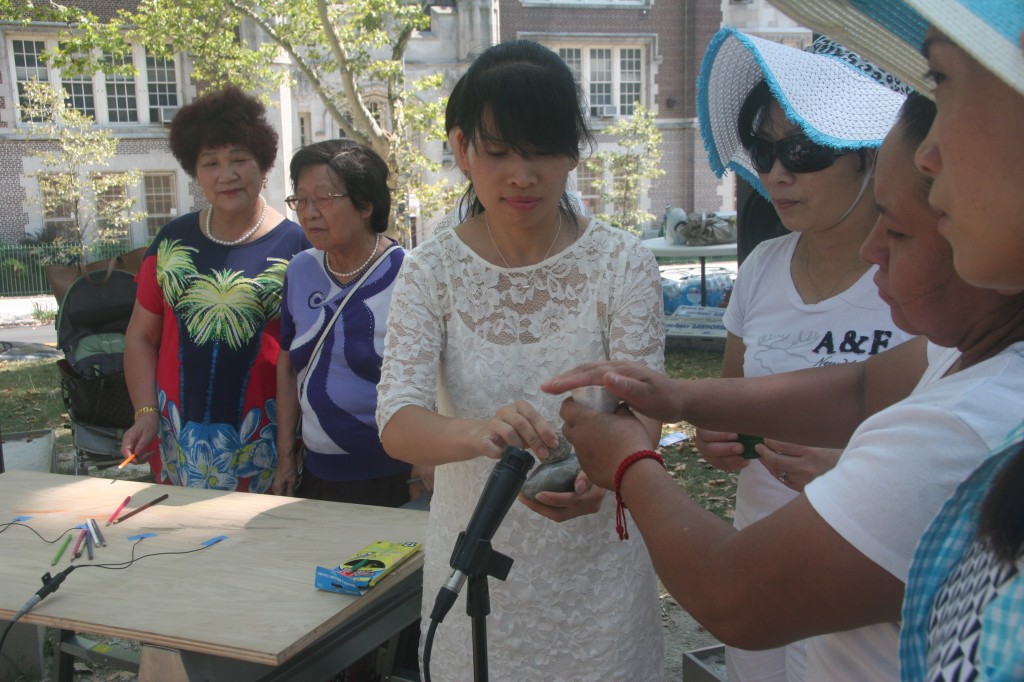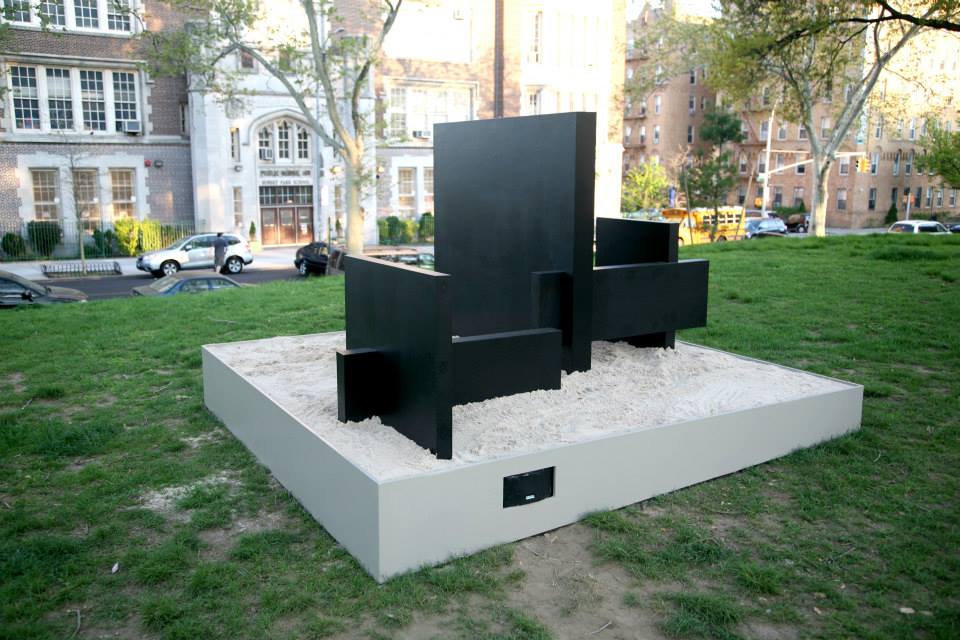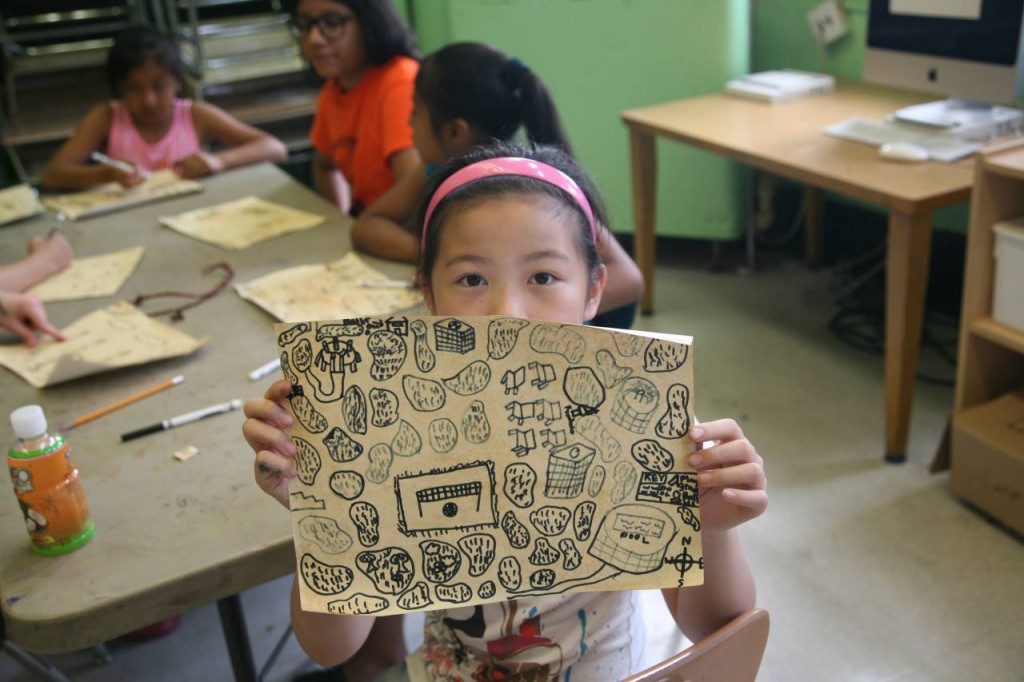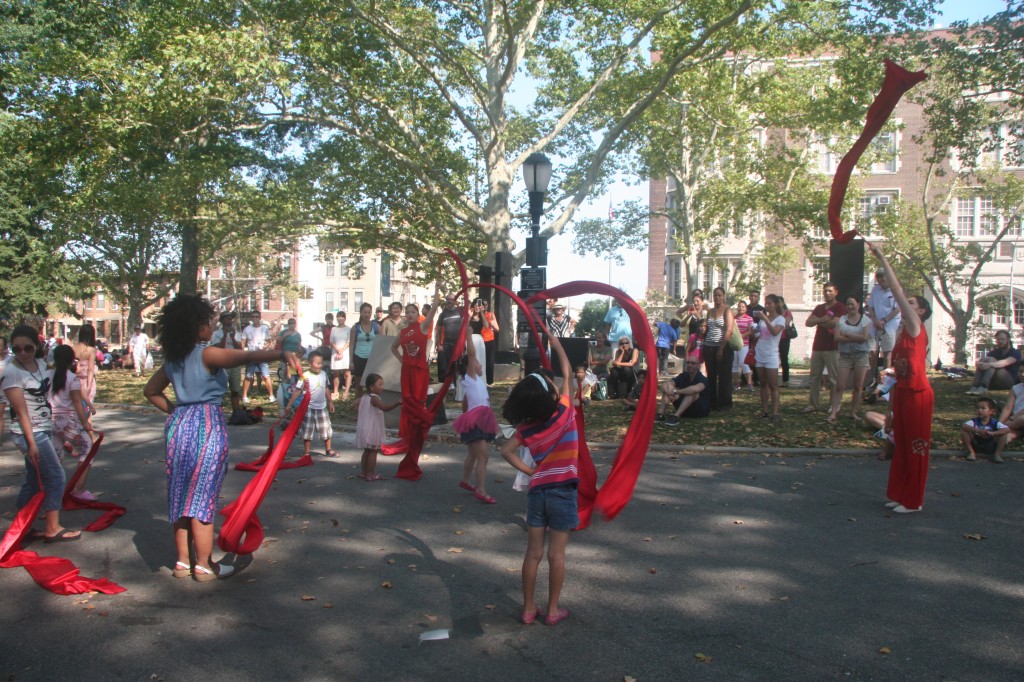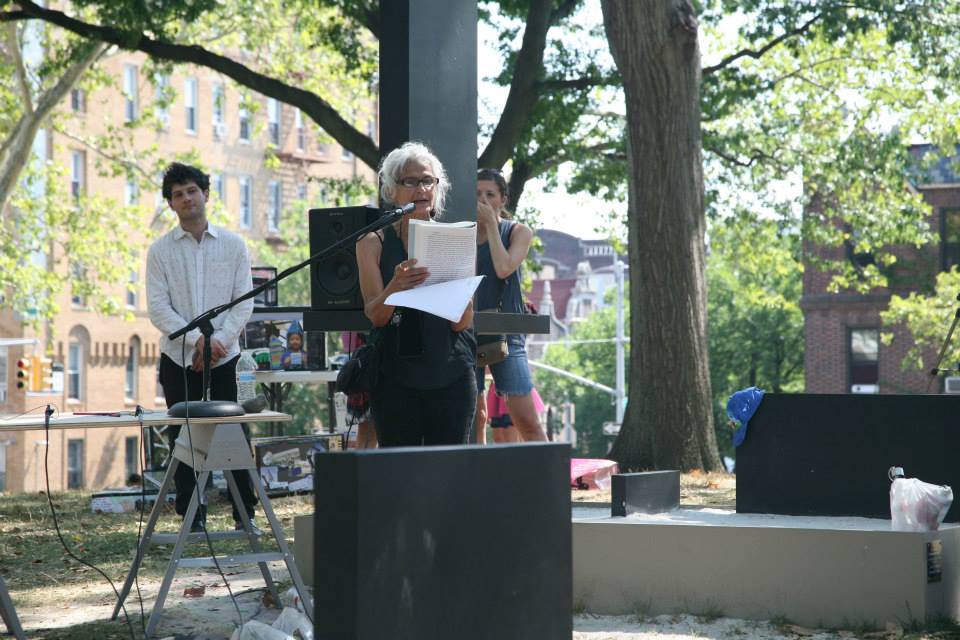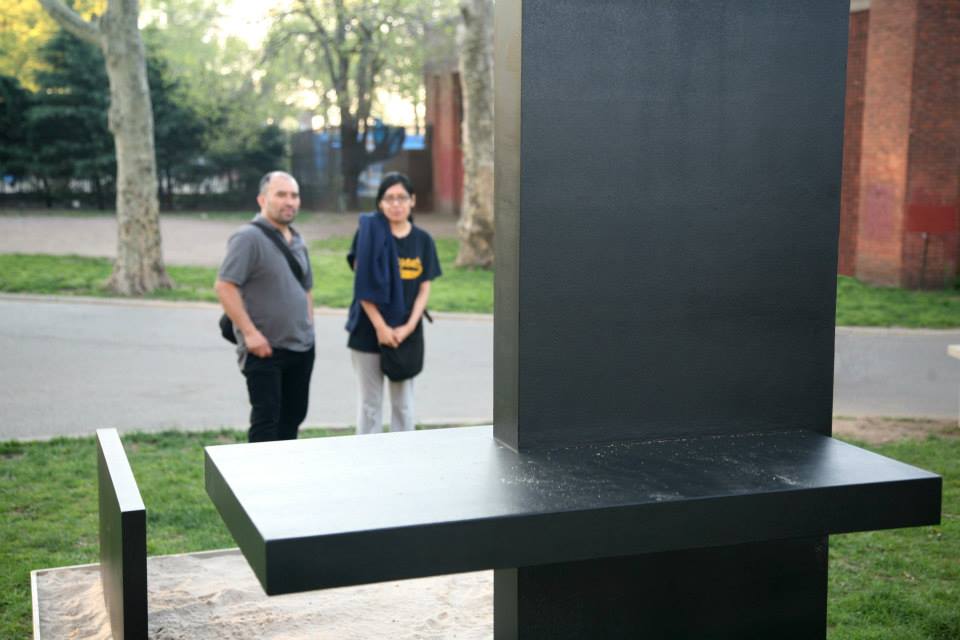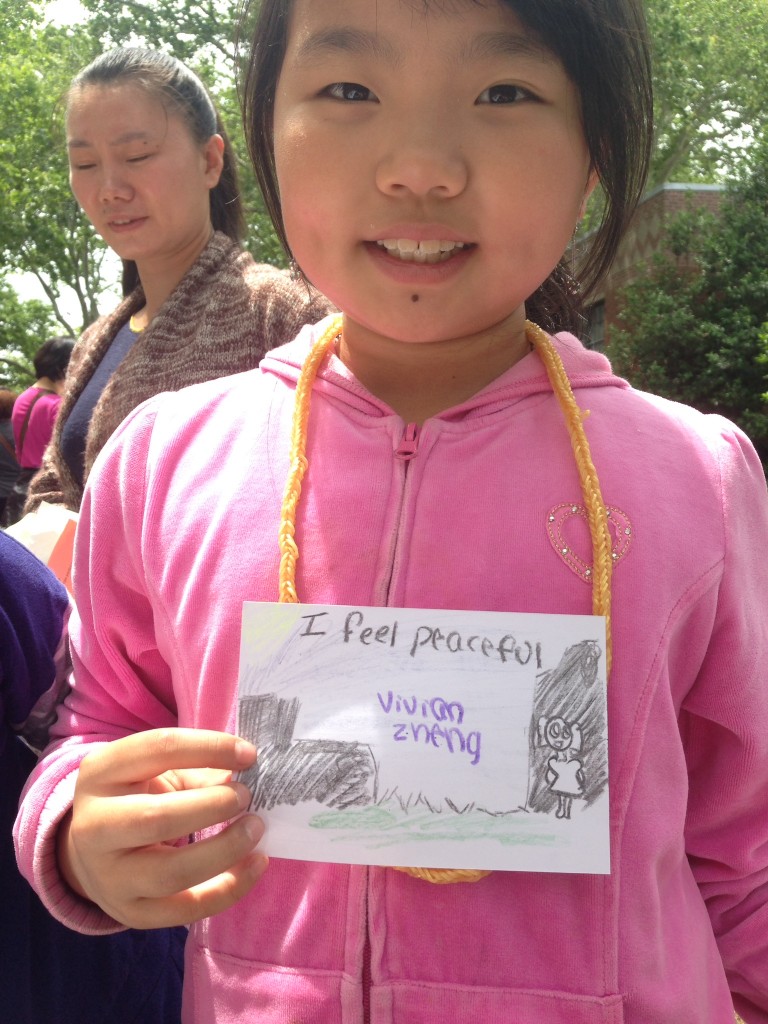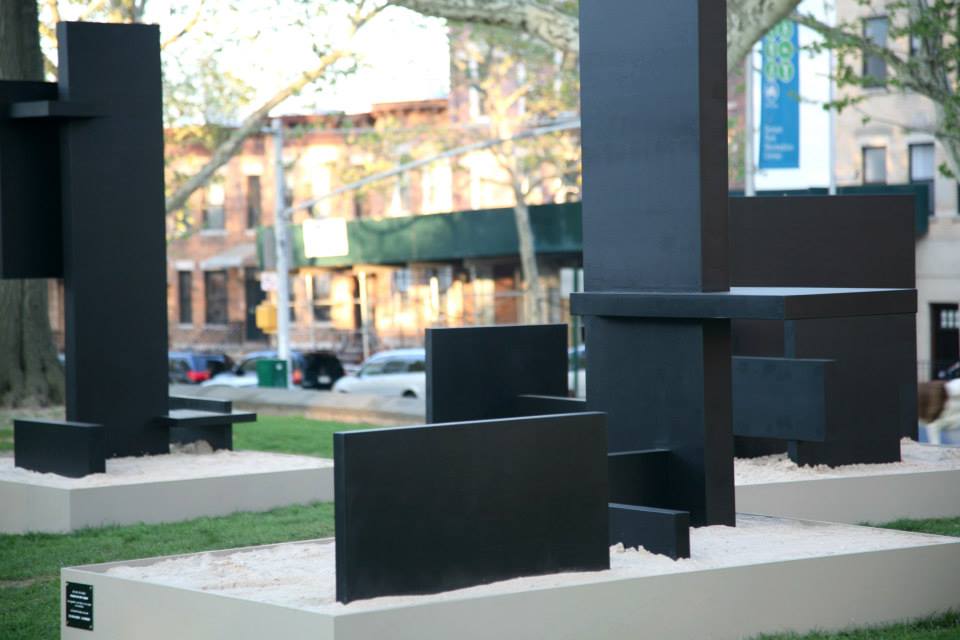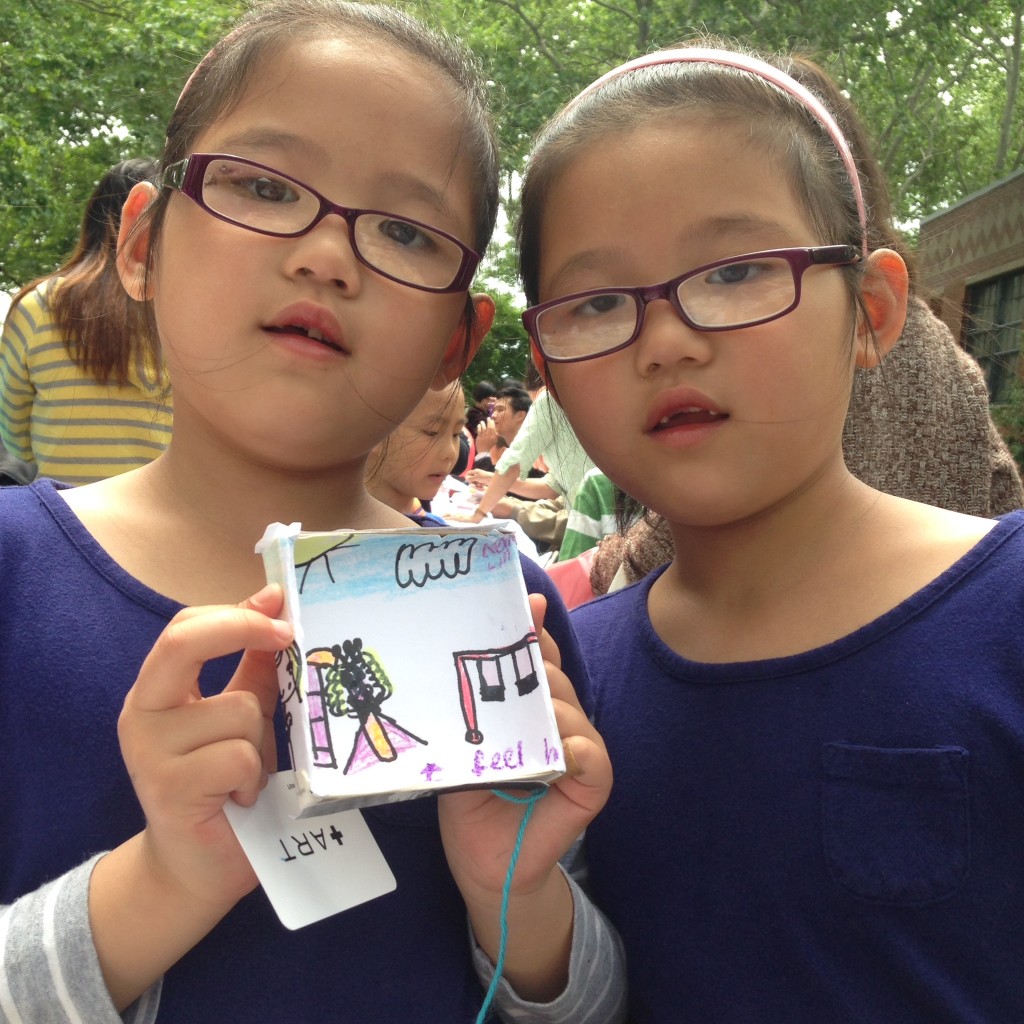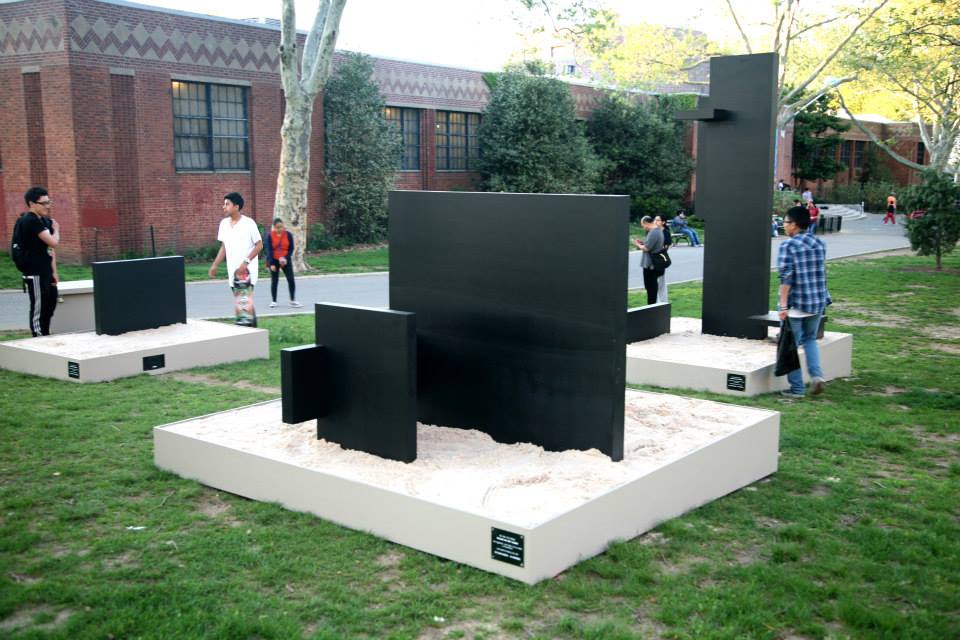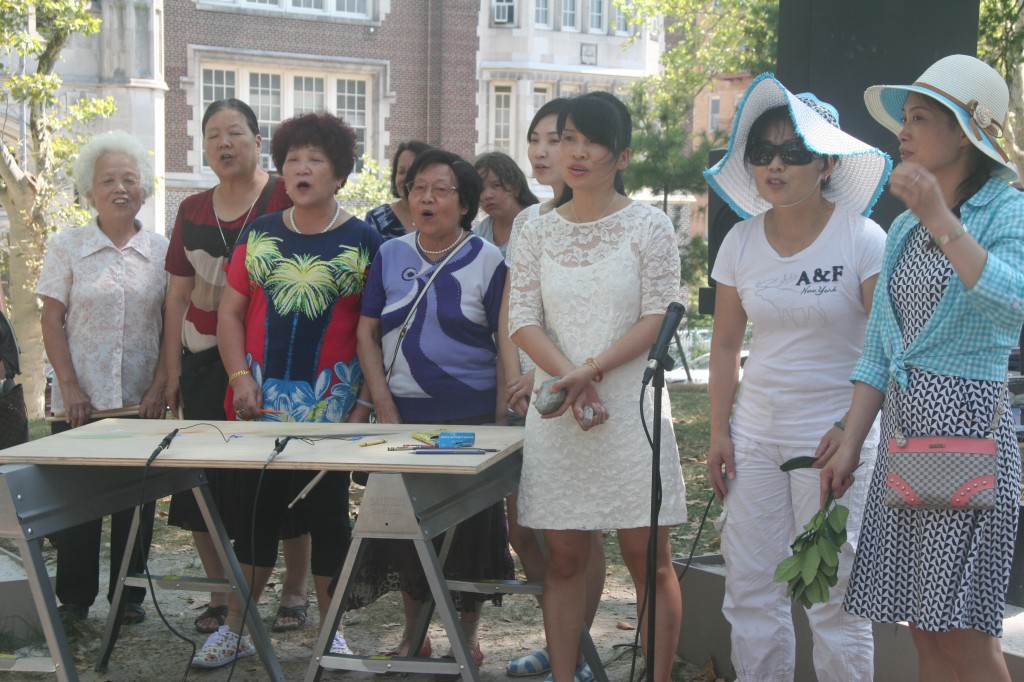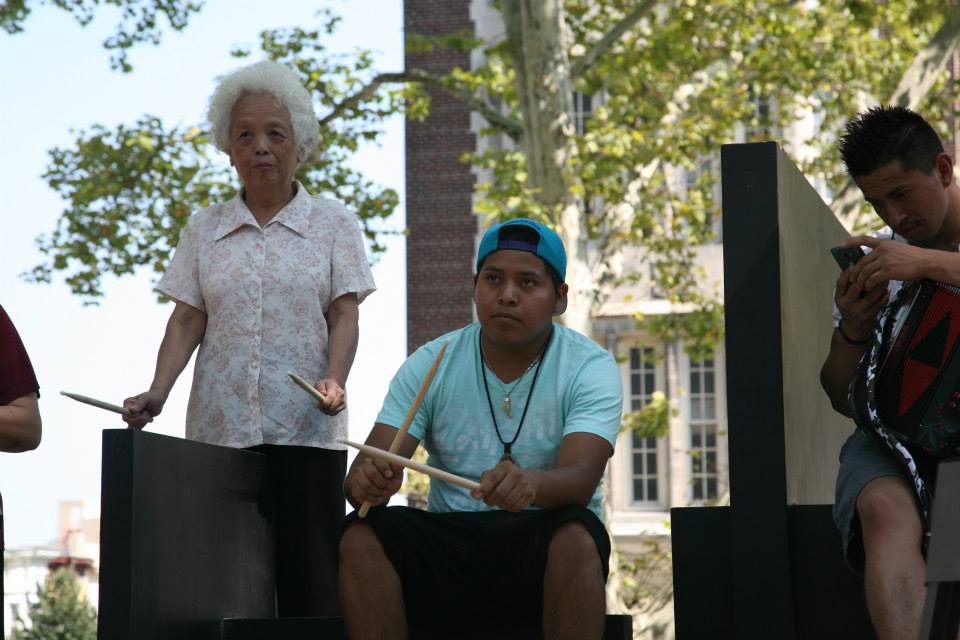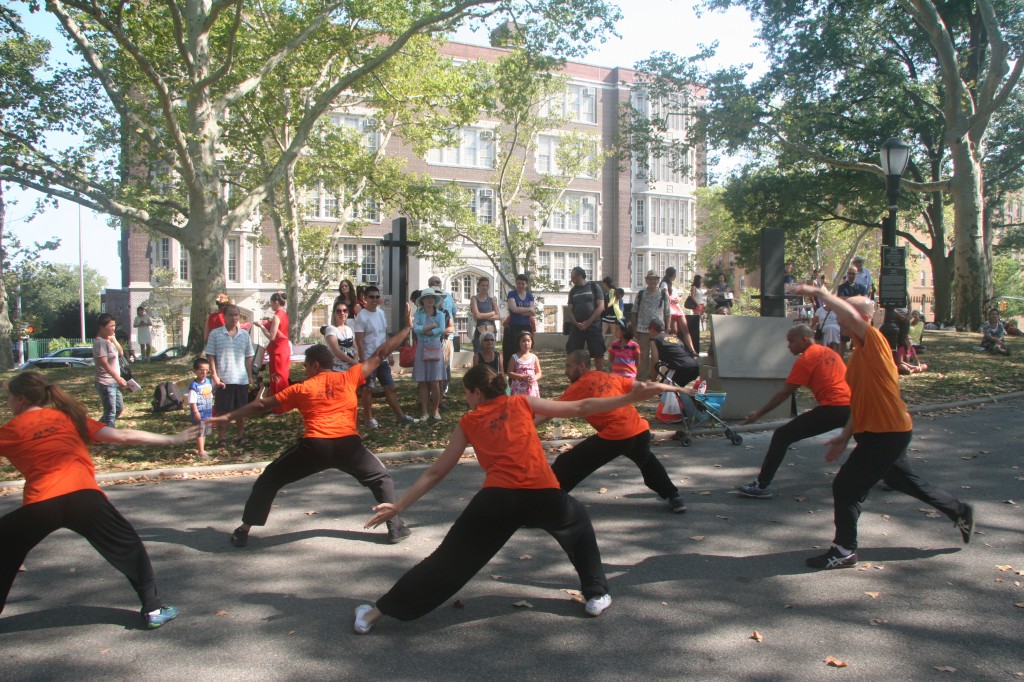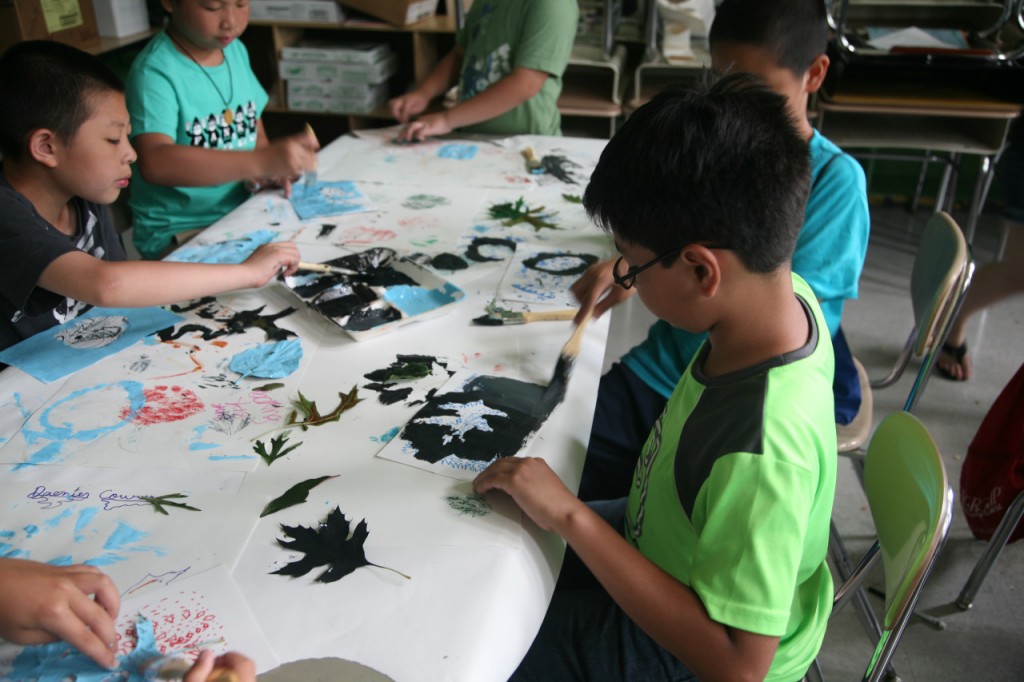about the project.
On View: May 8 – October 5, 2015
Arts Celebration — August 15th 2-5pm
Located next to the Sunset Park Recreational Center
44th St & 7th Ave, Brooklyn
Open during park hours
sound installation plays intermittently throughout the day
Sari Carel worked with Sunset Park’s stewards to gather data on the park’s local fauna; She collected field recordings of these native species and created a richly layered soundscape for the installation. The piece is played from speakers embedded in the sculpture, and park visitors are invited to engage with both sound and sculpture.
The project’s sculptural element forms a small architectural environment, acting as a focal point and physical marker for the presence of the less material sound piece. Made out of several free-standing wood elements, this grouping draws on a Modernist vocabulary, using forms that are anchored in a utilitarian past, but also depart from that. The forms echo the grid lines of the city, and create a drawing in space, conversing with the emblematic image of the Manhattan skyline visible from Sunset Park.
Borrowed Light is part of Carel’s continued investigation into alternative relationships between sound, image and audience. More importantly, Borrowed Light gives participants an opportunity to form a personal experience with an art piece and get a palpable sense of the creative process as both a private and public practice. The project’s main goal is to open the creative process and give participants a hands-on experience of the playfulness and enhanced receptivity that are at the core of art making but are rarely discussed in arts classes or museum tours.
información en español | 在中國的說明
outreach.
Conceived specifically for Sunset Park, “Borrowed Light” is enriched by outreach programs for neighborhood children and other interested community members organized by More Art in collaboration with local organizations, such as PS 169, Sunset Park HS, Turning Point Educational Center, Center for Family Life, and the Sunset Park Recreation Center. More Art educators and the artist are leading art, music and literary workshops, free and open to the public, for different age groups, in which the sculpture is the thematic fulcrum as well as a stage-set. Participants learn about the essential role of art, music and nature in an urban environment through hands-on activities that open the creative process to everyone by underscoring the playfulness and enhanced receptivity that are at the core of art making. The installation also becomes the backdrop for a series of evening events run by our community partners, comprising live performances, music and food, that bring the entire community together in the spirit of art and collaboration.
about the community.
Sunset Park has a vibrant history and diverse community. The neighborhood demonstrated its resilience through the crime-ridden 1980’s and has seen great positive changes in the last few years. When immigrant families were priced out of other areas of the city, the neighborhood provided the opportunity for affordable housing. However, Sunset Park is now in an extremely vulnerable position as the ongoing waves of gentrification continue in Brooklyn—one of the most expensive housing markets in the United States. With development on the horizon, it is critical for the community to express their voice in directing their course.
about the artist.
Sari Carel (www.saricarel.com) was born in Israel and lives and works in Brooklyn. Her work has been exhibited internationally in galleries and venues such as Artists Space, Nicelle Beauchene Gallery, Gavin Brown’s Enterprise and Dumbo Arts Festival in New York, and Tavi Dresdner and The Heder Gallery in Tel Aviv. Most recently she has received grants and residency fellowships from Bundanon Trust, Australia, Atlantic Center for the Arts, Florida, and Socrates Sculpture Park, New York.
natural sounds music workshop.
During August 2015, Sari Carel and composer Eli Keszler worked with advanced ESOL students of Turning Point Brooklyn Education Center in a series of “making music from nature” workshops. Each students brought a separate skill-set to the table and learned to create sound from drawing, rustling leaves, and using small microphones to amplify the sound of found textures – including: tree bark, rocks, and dirt. The workshop culminated with a public musical performance at the site of Borrowed Light in Sunset Park as part of an ‘Arts Celebration.’
Turning Point Advanced ESOL Class Summer 2015
“Our Experience Making Music with Natural Sounds”
“I felt the natural charm of music. I learned how to play the drums. I am very grateful to the teachers for their patience as music guides. They let us have more confidence to go to the performance.” – An Qiao Andrew Chen
“When we played in the music workshop I enjoyed it. We only use sticks, leaves, stones, pencils to make different natural sounds. Two sticks make percussion together. They make a nice melody. Blowing a leaf is like wind. We played all together. We also sang “Jasmine Flower” and played Mexican music too. It was a lot of fun for us.” – Hai Ying Chen
“One thing I enjoyed about the natural sounds music project was having fun with my classmates because all of us together can make music. Each of us can make the sound that we like, the sound of wind, trees, rocks and more natural sounds. When we join all those sounds with the help of the guys who run the project, we can make some music, and we can also include what we like to do. The Chinese classmates are singing a classic Chinese song and I can play the accordion.” – Oscar Villano
“I appreciated the elder ladies’ passion for music and for learning everything. I never knew by using leaves, stones, sand, pencils…we can make very beautiful sounds. I appreciated the music teachers’ creativity. I enjoyed the song “molihua”. It is a very old and popular song in China. This song with beautiful melodies expresses people’s love of life and beauty.” – Kendra Zhang
“After being part of this project New York instead of being a noisy city has become a music filled city for me. I loved the way the process of creating the natural sounds composition changed the way I hear now and expanded my awareness of what is music.” – Maritza Arrastia





